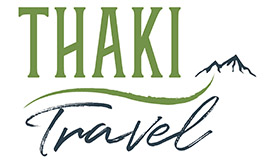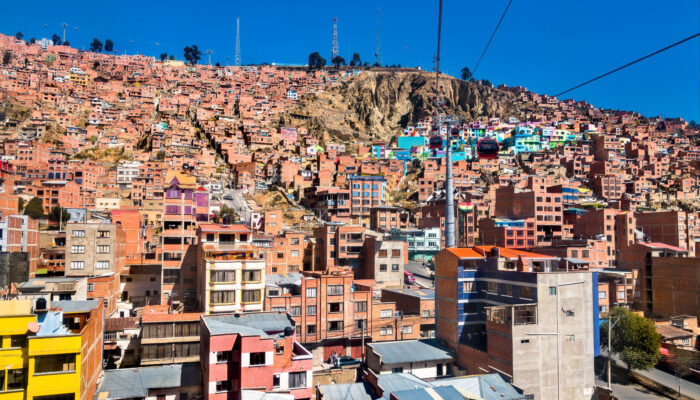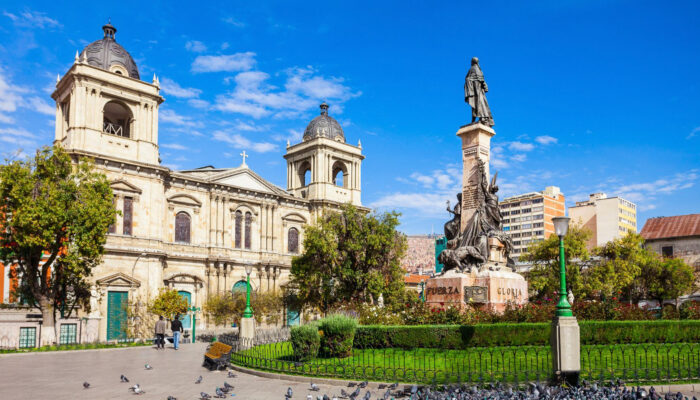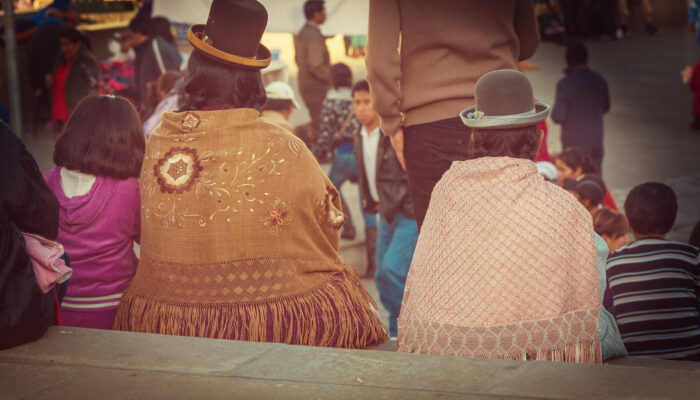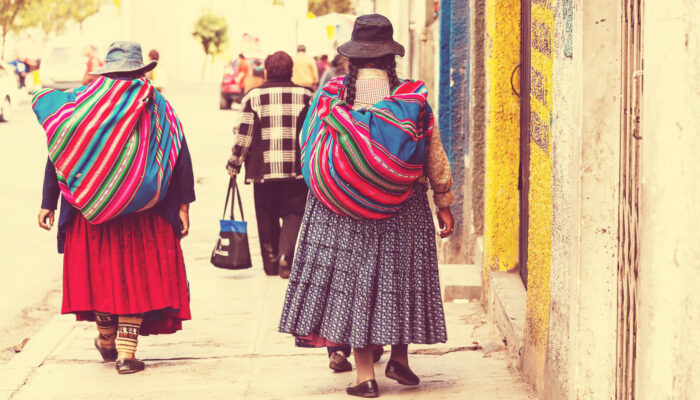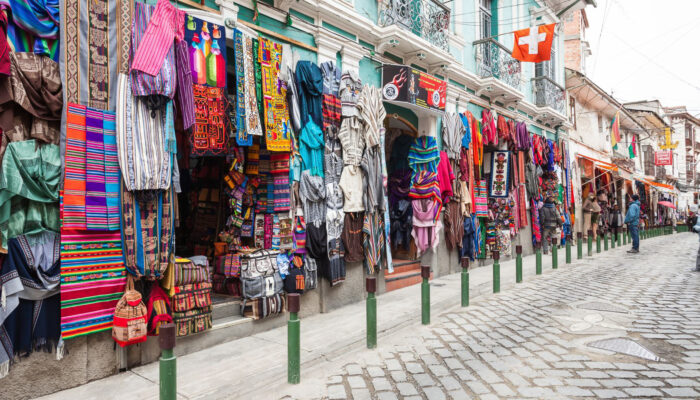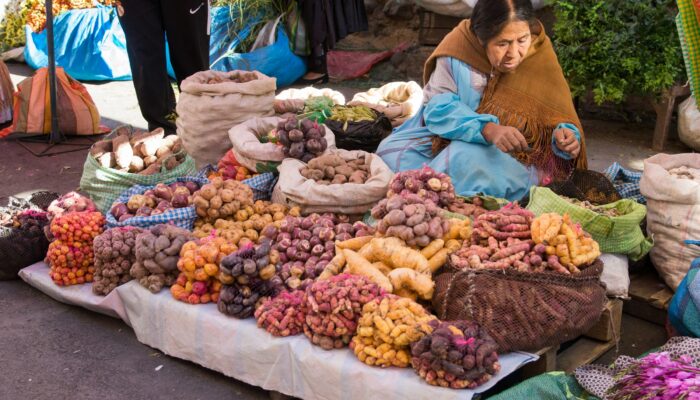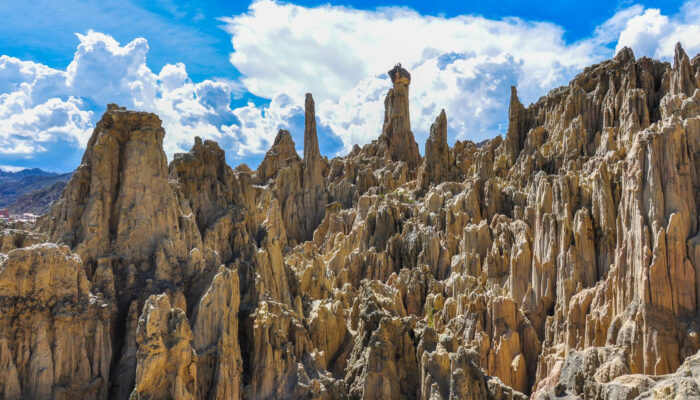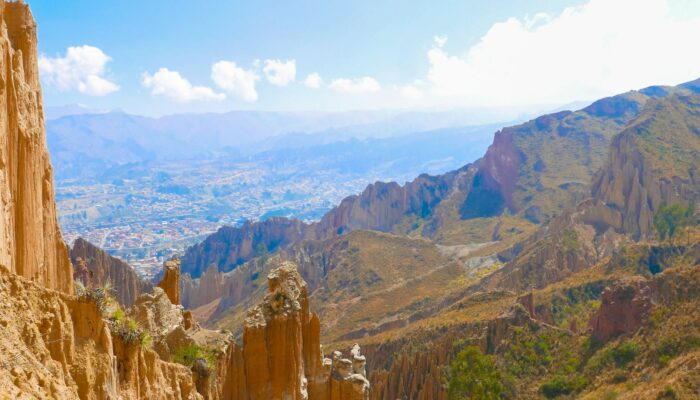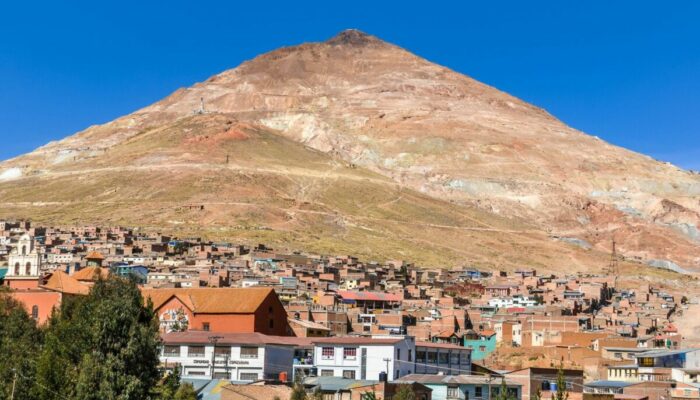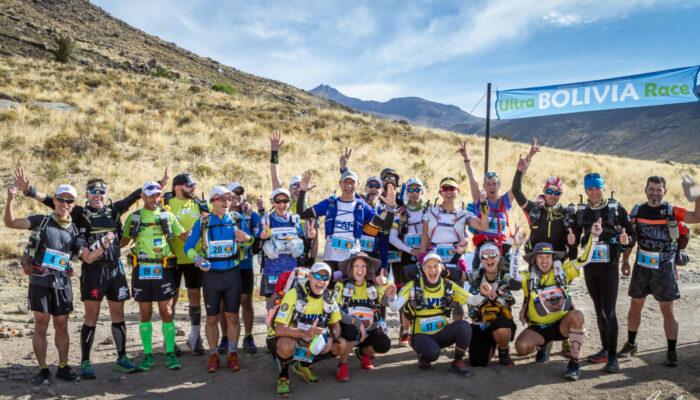Feet in the stars, head on the ground
Against a backdrop of snow-capped mountains overlooking a lively anthill traversed by a cable car, there’s no doubt that you’ve just landed in La Paz, Bolivia’s administrative capital.
Founded in 1548 by the Spanish captain Alonzo de Mendoza, Nuestra Señora de la Paz (Our Lady of Peace) remains tranquil in name only, for it is indeed a bustling city that you are about to discover.
With its sparkling lights and enticing smells, the valley’s frenetic pace will have you going at 100 miles an hour. However, don’t forget that it will take you a few hours to adjust to its altitude of 3,600 meters above sea level, making it the highest capital city in the world.
Don’t worry, Thaki Voyage will accompany you through the steep streets of the metropolis, located in the west of the country, and transport you to a firework display of surprises. Fly over the city, touch the stars and, above all, follow the guide!
An outdoor museum
A stroll through La Paz is like visiting an open-air museum, as the city is rich in historical sites and churches.
To the east of the Prado, the cathedral, built in 1835, stands next to the presidential palace. Opposite it is Plaza Murillo, one of the city’s liveliest squares, which is why it is also considered the historic heart of La Paz.
Here you’ll find street vendors and plenty of pigeons, fed by the locals: nothing better for mingling with the daily life of the Paceños.
Between ancient and modern, La Paz has some very colorful areas that contrast with the traditional architecture, including the Chualluma district and an open-air art gallery, where 15 works of street art tell the story of the city. These change every three months and can be seen in the Zona Sur district.
Several viewpoints allow you to contemplate the city’s expanse and size. In La Paz, you get the feeling that the sky is upside down and you’re walking on the stars. Experience this impression from the Mirador Laikakota at sunset, or from the mirador Killi Killi, and overlook the heights of the city while admiring the panorama: a mythical and unforgettable spectacle!
Discover the authenticity of Bolivian culture through the city's many museums
The city of La Paz offers a rich selection of museums, an opportunity to understand the country’s ancestral and colonial roots.
Visit Calle Jaén, where you’ll find 4 museums: the Museo Costumbrista, the Museo de Metales Preciosos, the Museo del Litoral and the Casa de Murillo. This is the most authentic colonial street in La Paz.
Note also the Museo de la Coca, which will help you understand the essential role played by this sacred leaf in traditional Bolivian societies, as well as in today’s soda industry.
And don’t miss the Museo de los Textiles Andinos, packed with treasures of traditional textiles.
You’ll find this love of colorful fabrics in the cholitas, who traditionally wear a colorful, patterned fabric called Aguayo. These indigenous women from different ethnic groups are also recognizable by their fabrics, voluminous skirts, hats and long black braids.
Previously discriminated against in the country, they are now fighting for their rights, so don’t hesitate to take the cable car to the high district of El Alto to watch a cholita wrestling match. The cable car runs from El Alto to the depths of Zona Sur.
The show takes place every Sunday and is particularly popular with the locals. Its symbolism is strong, as it marks the emancipation of Bolivian women and their ongoing struggle against the violence inflicted on them in society. Similar to a traditional wrestling show, you’ll be amazed by the fervor of the moment as you throw yourself into the ring.
Discover the markets of La Paz
Many cholitas sell their wares in the markets, particularly in the Mercado de El Alto, which is home to a large part of the Aymara population. It’s a place that’s both unique and authentic.
From the Mercado Negro, with its distinctive sounds, smells and flavours, to the Mercado Lanza, the city’s main food market, sample the country’s gastronomy and browse the stalls while nibbling on a salteña (see our previous article).
Bolivians attach great importance to the ingredients they choose. These same ingredients can also be used for protection, to ward off evil spirits or to thank the Pachamama. Offerings are then made to her.
Discover Bolivian beliefs during a visit to the Mercado de Hechicería, considered one of the city’s most curious witch markets. Meet fortune-tellers and wander through small local craft stores selling aphrodisiac products and plant- and animal-based remedies…. That’s all there is to it!
Also worth a visit: los Mercados de Rosario, de Belen and de San Pedro on the west side of the Prado.
Outside La Paz
If you want to get away from the hustle and bustle of the city, why not explore the many valleys surrounding the town. The Valle de la Luna, just 10 km away, offers superb hiking in an exceptional setting.
Further from the city center, but just as far from its hustle and bustle, the Valle de las Animas will also dazzle you with the strangeness of its gorges.
Grab your good shoes and come and join us in this urban frenzy! The Thaki Voyage team, based in La Paz, will be delighted to plan your tour of this bustling metropolis. Choose now the best time to visit the capital: from May to October, in high season, from November to April with a few drops of rain, or for the festive season from January to June, we welcome you with open arms! We hope to see you soon.
Mathilde Leroux
